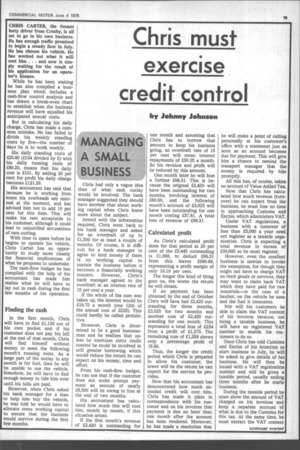MANAGING A SMALL BUSINESS
Page 81

If you've noticed an error in this article please click here to report it so we can fix it.
Chris had only a vague idea then of what cash outlay would be involved. The bank manager suggested they should have another chat about working capital when Chris knew more about the subject.
Armed with the information required, Chris went back to his bank manager and asked for an overdraft of up to £1,500 for at least a couple of months. Of course, it is difficult for a bank manager to agree to lend money if there is no working capital to sustain the business before it becomes a financially working concern. However, Chris's bank manager agreed to the overdraft at an interest rate of 15 per cent a year.
If the whole of the sum was taken up, the interest would be £18.75 a month (one 12th of the annual cost of £225). This could hardly be called prohibitive.
However, Chris is determined to be a good businessman and he realises that unless he exercises strict credit control he could be involved in still greater borrowing which would reduce the return he can expect on his money, time and effort.
From his cash-flow budget, he can see that if the customer does not make prompt payment an amount of nearly £5,500 will be owing to him at the end of two months.
His accountant has calculated how much this will cost him, month by month, if this situation arises.
If the first month's revenue of £2,420 is outstanding for




























































































































